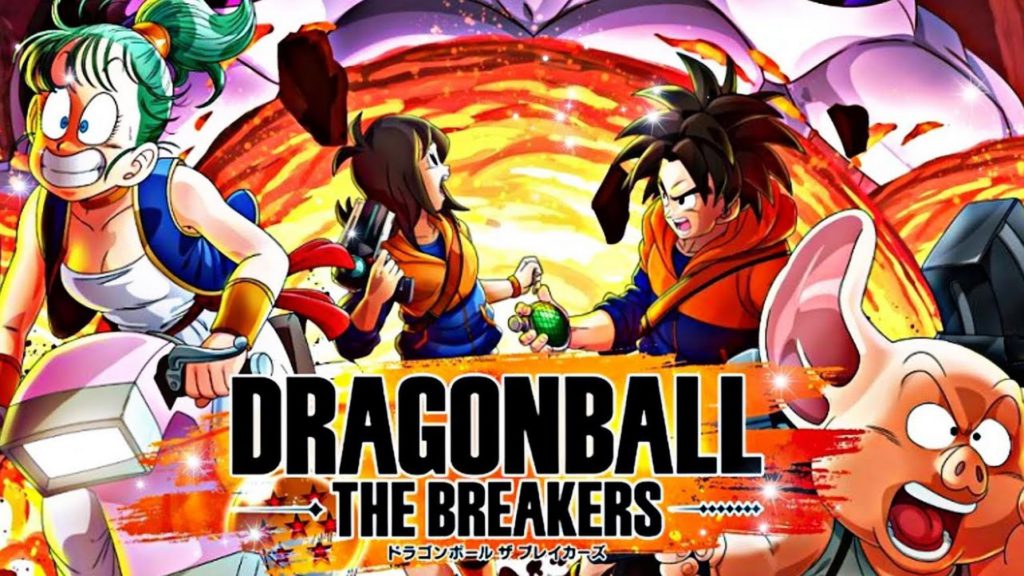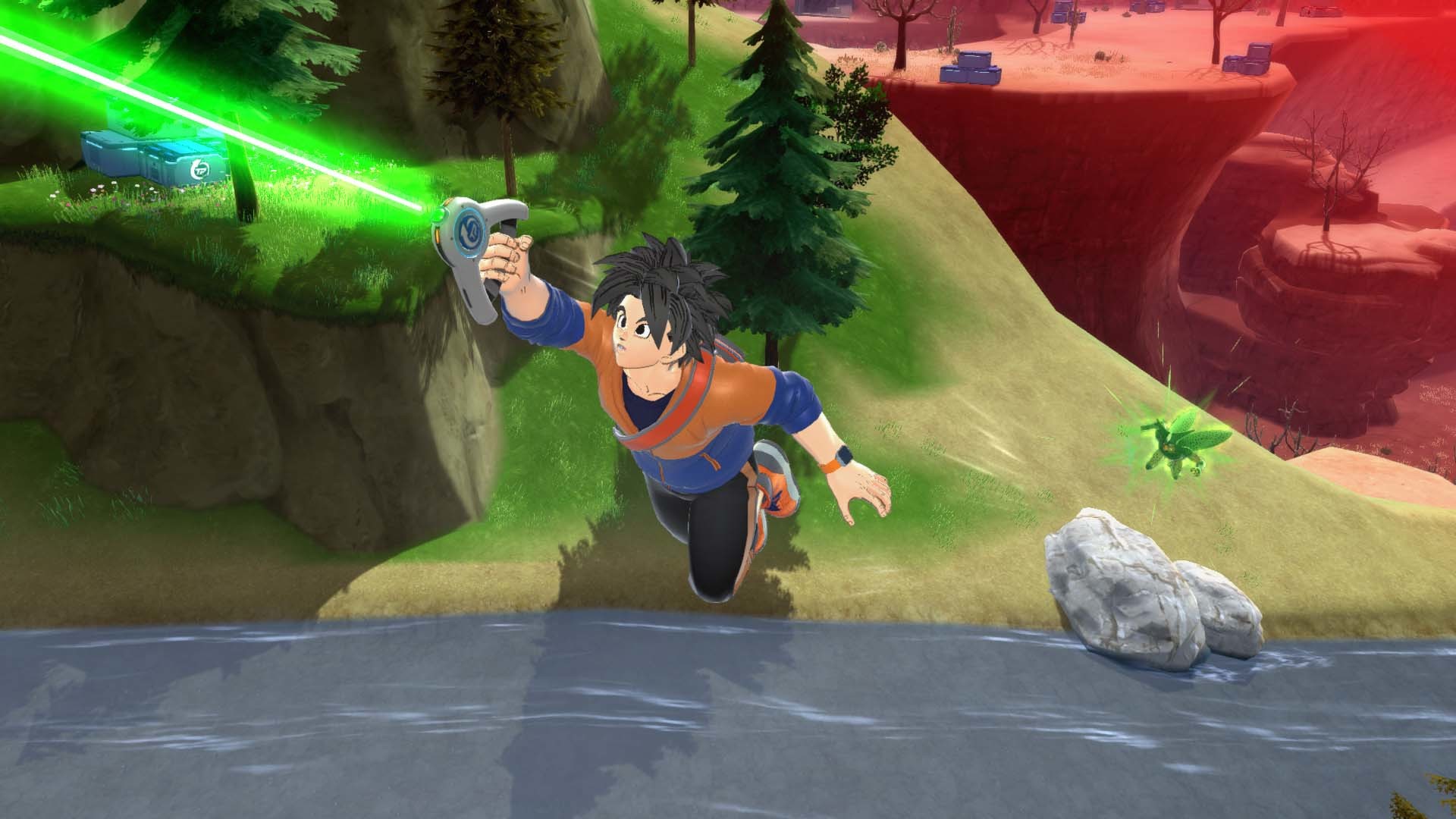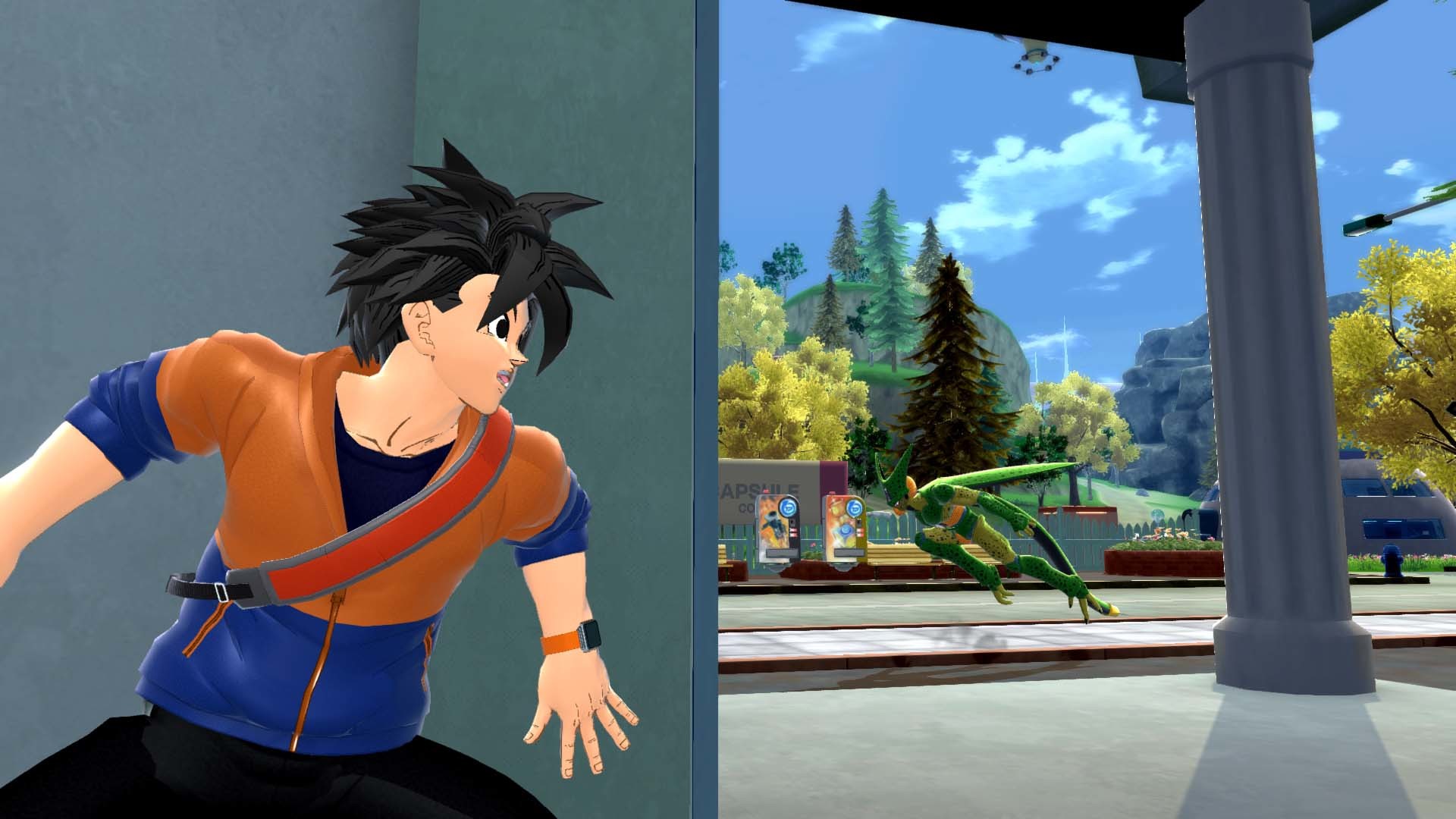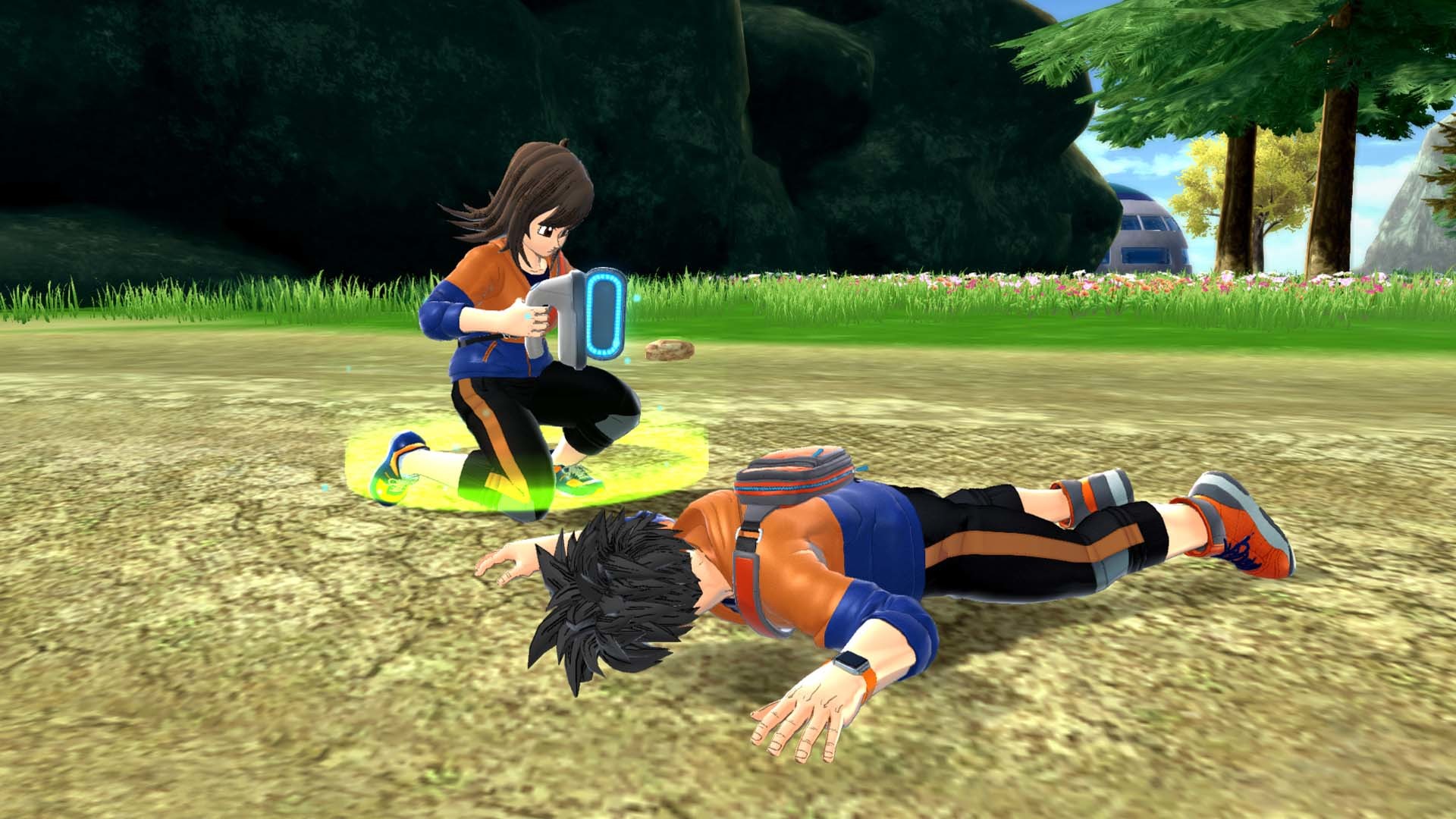
There are many generation-defining moments in pop culture, and a universal moment in history was seeing Goku turn Super Saiyan for the first time. The lead-up to this very moment was following the ultimate bad guy at the time, Frieza, as he terrorised the people of Namek. The fear that he struck into their hearts as he picked off those that got in the way, and the threat of his evolving form were a big part of why he was so menacing. The idea of this monster going unchecked with no Super Saiyan to step in is the very concept of Bandai Namco’s new game, Dragon Ball: The Breakers, where 7 survivors must work together to escape, with a few twists along the way.
Dragon Ball: The Breakers has a lively and vibrant setting with a playful art style that is inspired by the anime. With only three levels available at launch, the Waterfront Warzone map offers a tighter place space with destructible buildings. The Green Coast had bodies of water to swim through each zone and was a colder environment that offered dimmer lighting to highlight the gloom. This brings the Highland River map out a balance between the two with open fields, water to dive down, and buildings to plunder. The music during the levels was usually absent until you transformed or got into combat but would scale the further into the match you made it.
It was refreshing to play a survival game in broad daylight, and despite my initial concerns, it didn’t take away from the urgency of being hunted and wasn’t as condemning while trying to hide either. This was especially true when playing as the survivors. They would scurry along the ground while sneaking and hiding behind walls while shaking uncontrollably. It was quite funny to watch. The animation for the villain, though, is much more family-friendly than hanging people off a bloody hook, as Dead by Daylight would have you doing.

The general concept is that you have been caught in a time portal and are trapped with a Raider, and your main objective is to reactivate the super time machine. Each map is divided up into five locations surrounding a central zone, and within each zone is a hidden power key that can be used to power the start-up system which is used for the end-game escape mechanic. Players must move quickly though, as the Raider can destroy an entire zone each time they level up.
Teamwork can make short work of things, as one player may find the power key on one side of the zone and the other survivors can plant it in the designated area. It was a very clear system that showed the active zones on the top left, highlighted the ones where keys had been found, and crossed out the destroyed zones too, which eliminated the guessing portion and keep things flowing.
Survivors had access to a handful of items during a game and a list of active skills they could bring in on their own that must be purchased from the store with in-game currency. Being able to use your skills to drop a smoke cloud and then drop a bounce pad at your feet to flee a hairy situation was something small to keep you alive for the moment but waiting for them to refresh balanced the experience.
Obtaining new passive skills comes from cashing in your credits for chances at new transpheres. These pulls have random passive skills you can put into a character build that can also be levelled up to reduce the cooldown with ‘spirit’, that you earn through gameplay. Being able to slide down hills with the slide ability was a handy escape option as well as fast traversal so certain skills could serve a dual purpose.

Other items that can be found in the level itself, such as the Senzu Bean, could let you self-revive or quickly pick up a fallen survivor, and the rocket launcher could be used to disrupt the Raider from absorbing your teammates. The absolute best part I found, however, was the addition of the Transpheres, harnessing the essence of a Z fighter and letting you temporarily transform into a version of these super warriors.
The survivors could reach level 3 on their own by picking up power cubes throughout the map and the higher you levelled, the stronger your transformation. It gave you a chance to fight back, or even fly away, as the Raider will still be able to wipe the floor with you if you are not at the same level of power as them.
Raiders were comprised of three different characters, Frieza, Cell, and Buu; which all have four total levels of evolution. Cell starts off in Larva form and must scurry around the map looking for NPCs or players for that matter, to munch on to level up, although the players can fight back. His attacks resemble the Z fighters as he evolves and is the most balanced raider. Frieza can bring in Zarbon and Dodoria to help track down survivors and has some very powerful ranged attacks. His four stages of transformation felt like a natural progression of abilities to the devastating giant ball of death in his final form.
Buu on the other hand seems to be very potent out of the gate and arguably has the most unique experience of the three. His first phase starts with Spopovich who needs to gather energy and bring it back to an egg to bring out Majin Buu. If you manage to get to level 4 and turn into Kid Buu the entire lobby gets absorbed into an entirely different arena and you have to find the egg and free Majin Buu to escape to the main arena. It felt like more work was put into Buu compared to the others and was also insanely strong for some reason, to be honest, it feels like it needs a bit of a balance tweak.

The turning point of each game can be dramatically flipped on its head with the additional mechanic of finding the seven Dragon Balls. If the survivors manage to collect all seven Dragon Balls and make a wish, that can turn one survivor into a true rival of the Raider and have a one-on-one fight straight out of the anime. They may also wish for every survivor to be raised to level three power, and together, can take on the Raider in an all-out brawl. The Raider can collect the Dragon Balls to boost their own power as well, but unlike the survivors who must be knocked out for them to drop their Dragon Balls, the Raider merely needs to be hit for them to drop their stash, making it a valid strategy to attack the Raider in an attempt to summon Shenron.
During the beta, there were enough credits given to slowly unlock transpheres, cosmetics, and skills with Zeni, TP tokens, and spirit siphon tickets. The final game has brought on a very bimensal rewards system that only offers 3 TP tokens per match, with one summon costing 150 TP tokens, meaning if you got no other credits, it would take 50 matches per summon. There is a friend code system that gave spirit siphon tickets every other game, but the saviour came in the form of the Dragon Tier Pass. This system allowed the player to unlock cosmetics, all forms of credit, emotes, and voice lines for the Raiders at a steady pace, not enough to completely cover the throttled feeling though that feels designed to push the player towards cash purchases for TP tokens.
Dragonball; The Breakers offers a refreshing take on the one verse many game-type and truly hits home with one of the most iconic anime settings of all time helping their case. The currency system needs some work, however, as the purchases are not purely cosmetic and the Dragon Tier Pass can only offer so much. While most games were balanced, the Raiders can be a little dominating at times but with good teamwork, the majority of teams can come away with something to smile about.

The Good
- Dragon Ball setting is in excellent fit
- Three Raiders offer different experiences
- Survivors have multiples ways to win
- Passive and active skills are unique, useful and can be levelled up
- Maps, art style and music are all charming
- Objectives are clear to follow
The Bad
- Currency system is flawed and feels throttled
- Raider damage can feel unbalanced at times
- Only three maps at launch








